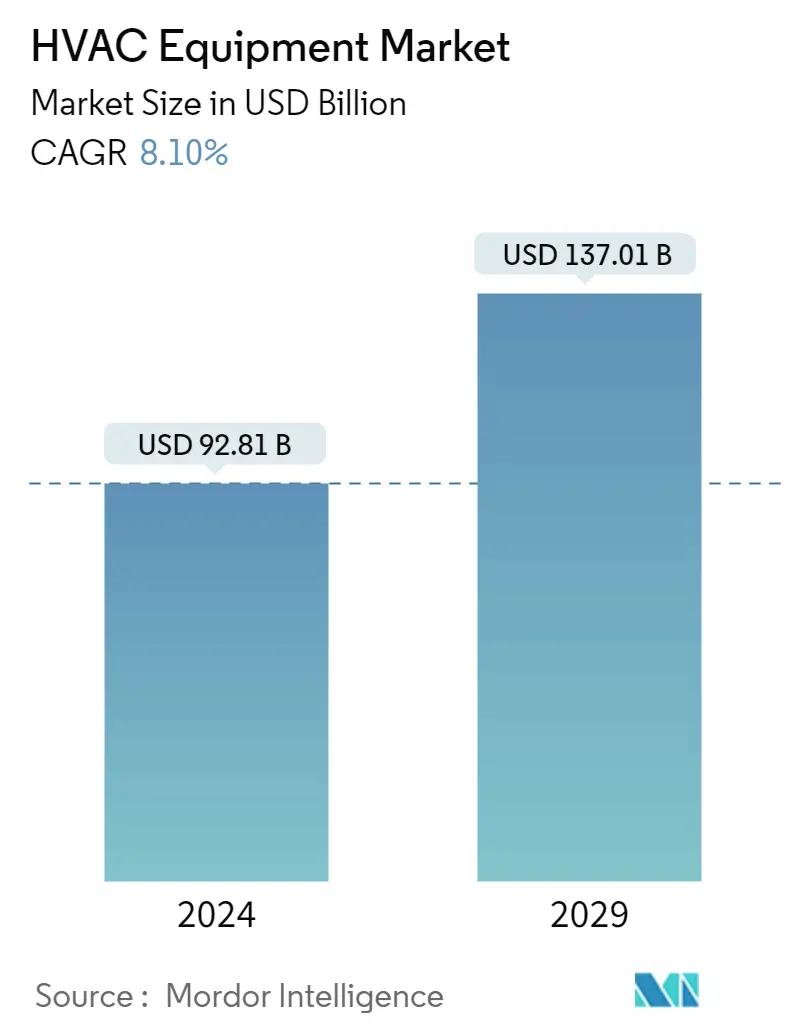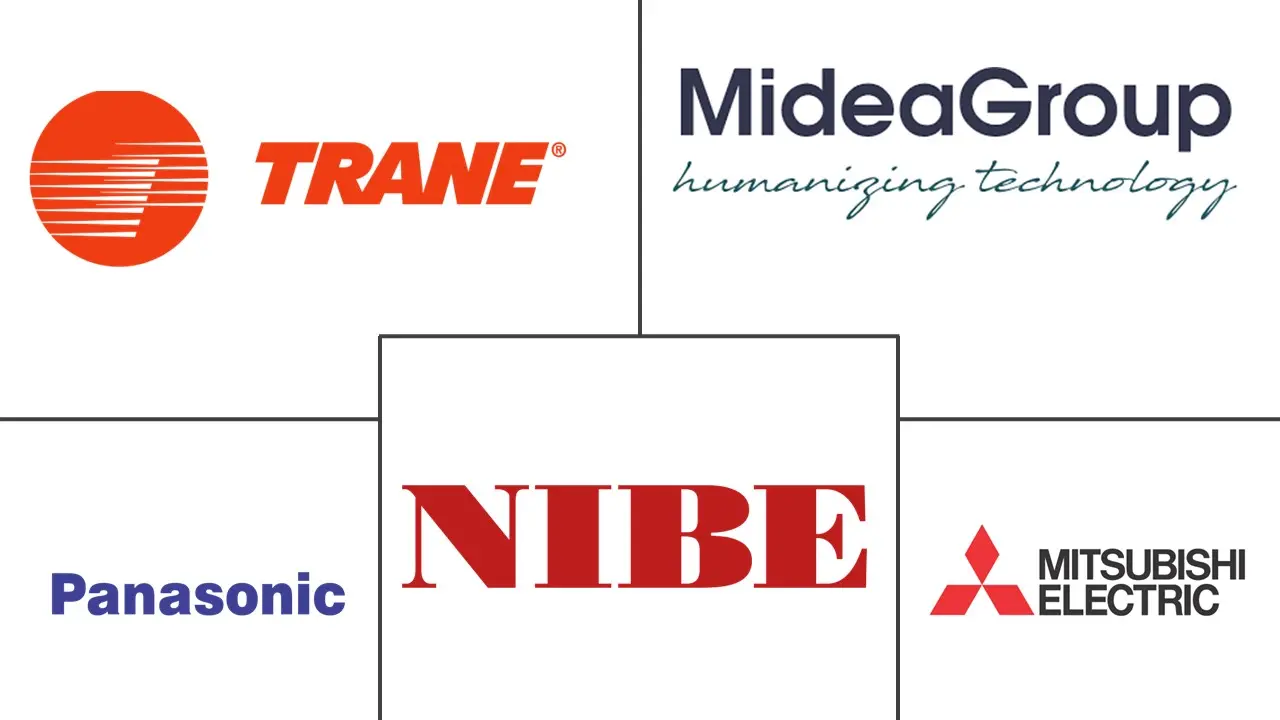Market Size of HVAC Equipment Industry

| Study Period | 2019 - 2029 |
| Market Size (2024) | USD 92.81 Billion |
| Market Size (2029) | USD 137.01 Billion |
| CAGR (2024 - 2029) | 8.10 % |
| Fastest Growing Market | Asia Pacific |
| Largest Market | Asia Pacific |
Major Players
*Disclaimer: Major Players sorted in no particular order |
Need a report that reflects how COVID-19 has impacted this market and its growth?
HVAC Equipment Market Analysis
The HVAC Equipment Market size is estimated at USD 92.81 billion in 2024, and is expected to reach USD 137.01 billion by 2029, growing at a CAGR of 8.10% during the forecast period (2024-2029).
HVAC equipment can be applied in a wide range of locations and building types, such as shopping centers, industrial facilities, warehouses, etc., and ensures that a building has proper climate control with heating and cooling along with the necessary air pressure and air quality to make the occupants in the building comfortable and safe.
The rapid rise in industrialization and urbanization worldwide is one of the primary factors driving the market's growth. The movement of people from rural areas to live in towns and cities is one of the most significant population trends of modern times. More than half the world’s population (56.2%) lives in cities today. This trend toward greater urbanization can be seen in all regions of the world but is most pronounced in Latin America and the Caribbean, where more than 80 percent of the population now live in urban areas.
Urbanization looks set to continue to follow this upward curve, with the United Nations predicting that 68% of the global population will live in urban areas by 2050. With the increase in urban population, proper ventilation systems in buildings are useful in reducing air pollution levels, regulating temperature, and maintaining a healthy environment for urban residents. A ventilation system can help remove a build-up of pollutants, bacteria, and bad odors. It can also manage the temperature of a room to make it more comfortable and reduce the chance of mold growing.
According to the United Nations, the current world population of 7.6 billion is expected to reach 8.6 billion in 2030, 9.8 billion in 2050 and 11.2 billion in 2100. With roughly 83 million people being added to the world’s population every year, the upward trend in population size is expected to continue, even assuming that fertility levels will continue to decline.
Many governments worldwide offer tax incentives to encourage the installation of efficient HVAC (Heating, Ventilation, and Air Conditioning) equipment. This is part of a larger effort to reduce carbon emissions and mitigate the impact of climate change. By bolstering current supplies while accelerating the sustainable energy transition, the energy provisions of the Inflation Reduction Act will strengthen energy security and meaningfully reduce emissions, representing an important step toward a better future.
According to the European Commission, buildings in the European Union are responsible for around 40% of the energy consumption and 36% of greenhouse gas emissions, mainly from construction, usage, renovation, and demolition. HVAC systems account for a considerable share of energy usage in these buildings.
An HVAC is a complicated system made up of many different parts, including other factors such as the size of the home, type of HVAC system, HVAC brand, labor cost, climatic conditions, ductwork size, level of energy efficiency, come up with a high cost. Moreover, increasing focus on more advanced products, such as switching out a conventional heat pump for a geothermal heat pump, is expected to enhance the price charges associated with HVAC systems.
In the initial months of the outbreak of the COVID-19 pandemic, the HVAC market received a significant setback as many construction projects across the residential and construction sectors were halted globally, temporarily dampening the demand for HVAC equipment. However, governments worldwide highlighted the importance of a proper ventilation system to reduce the spread of the virus, which positively impacted the market's growth.
